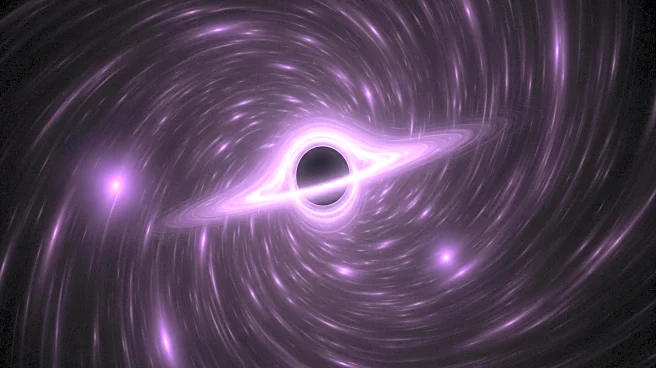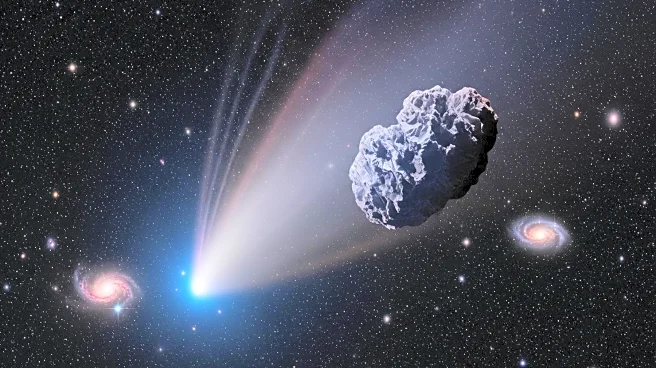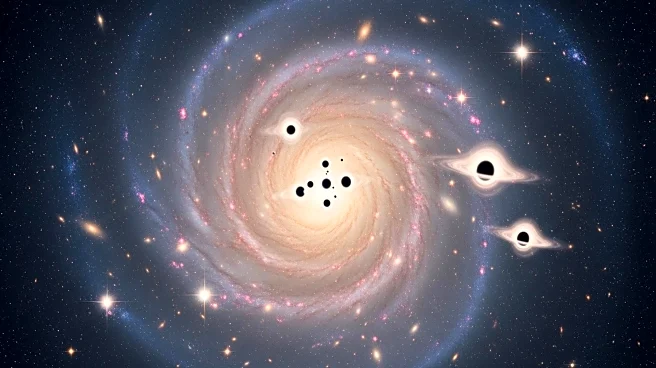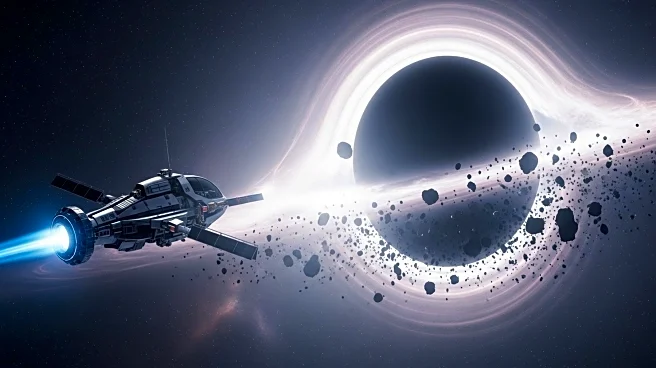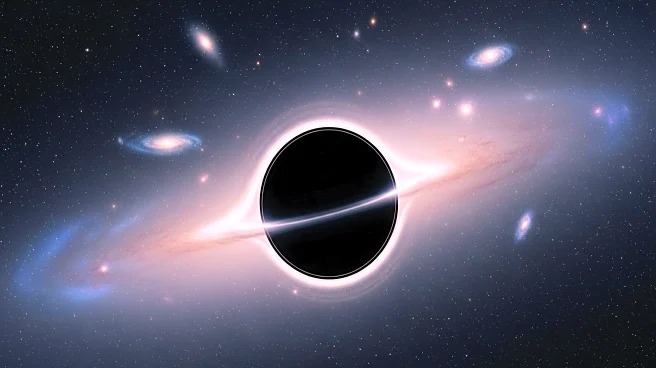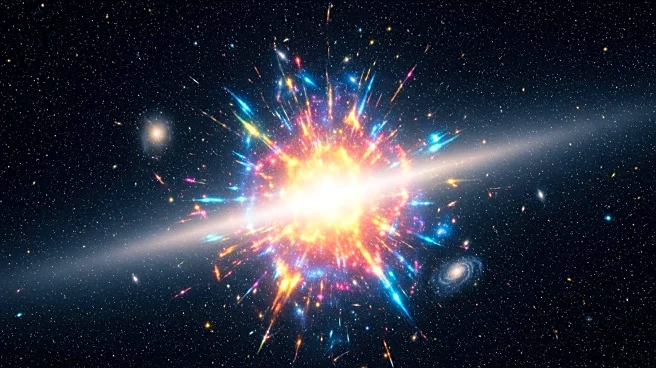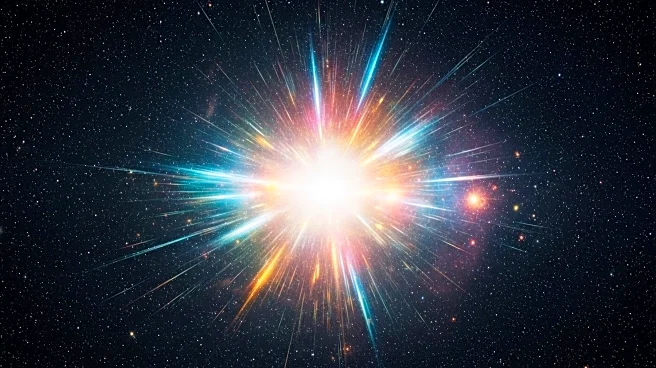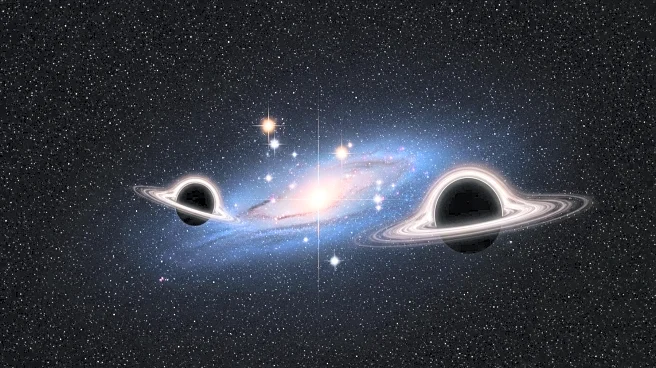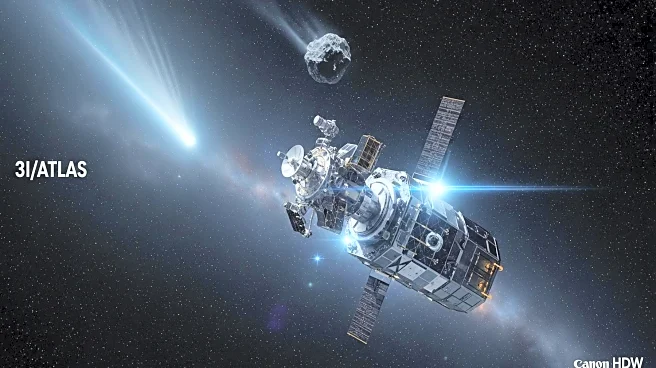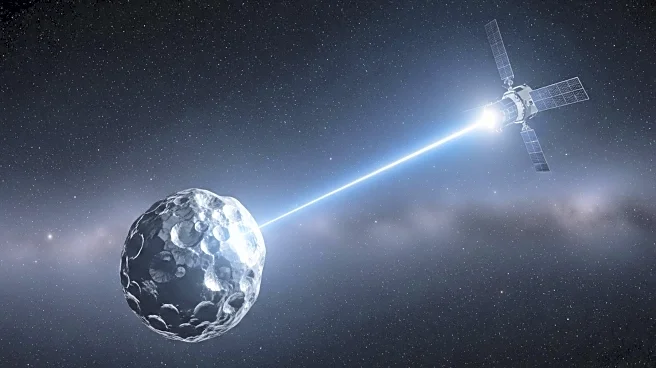What is the story about?
What's Happening?
The XRISM satellite, a collaboration between NASA and JAXA, has provided new insights into the feeding behavior of stellar-mass black holes. The study focused on 4U 1630-472, a black hole 26,000 light-years away, revealing its messy consumption of surrounding matter. The black hole's accretion disk, formed from material stripped from a companion star, exhibited high temperatures and X-ray emissions. This discovery, led by Jon Miller of the University of Michigan, offers clues about the evolution of supermassive black holes.
Why It's Important?
Understanding the feeding behavior of small black holes is crucial for insights into galactic evolution. The study of 4U 1630-472 provides a model for how gas flows onto massive black holes, potentially influencing galaxy development. The findings highlight the importance of advanced X-ray spectroscopy in revealing cosmic phenomena, offering a window into the chaotic processes that govern black hole growth and their impact on surrounding environments.
What's Next?
Researchers plan to continue studying the feeding behavior of black holes using XRISM's advanced capabilities. The mission's sensitivity allows for detailed analysis of spectral lines, providing a deeper understanding of black hole dynamics. Future studies will focus on the implications of these findings for galaxy evolution and the role of black holes in shaping cosmic structures.
AI Generated Content
Do you find this article useful?
